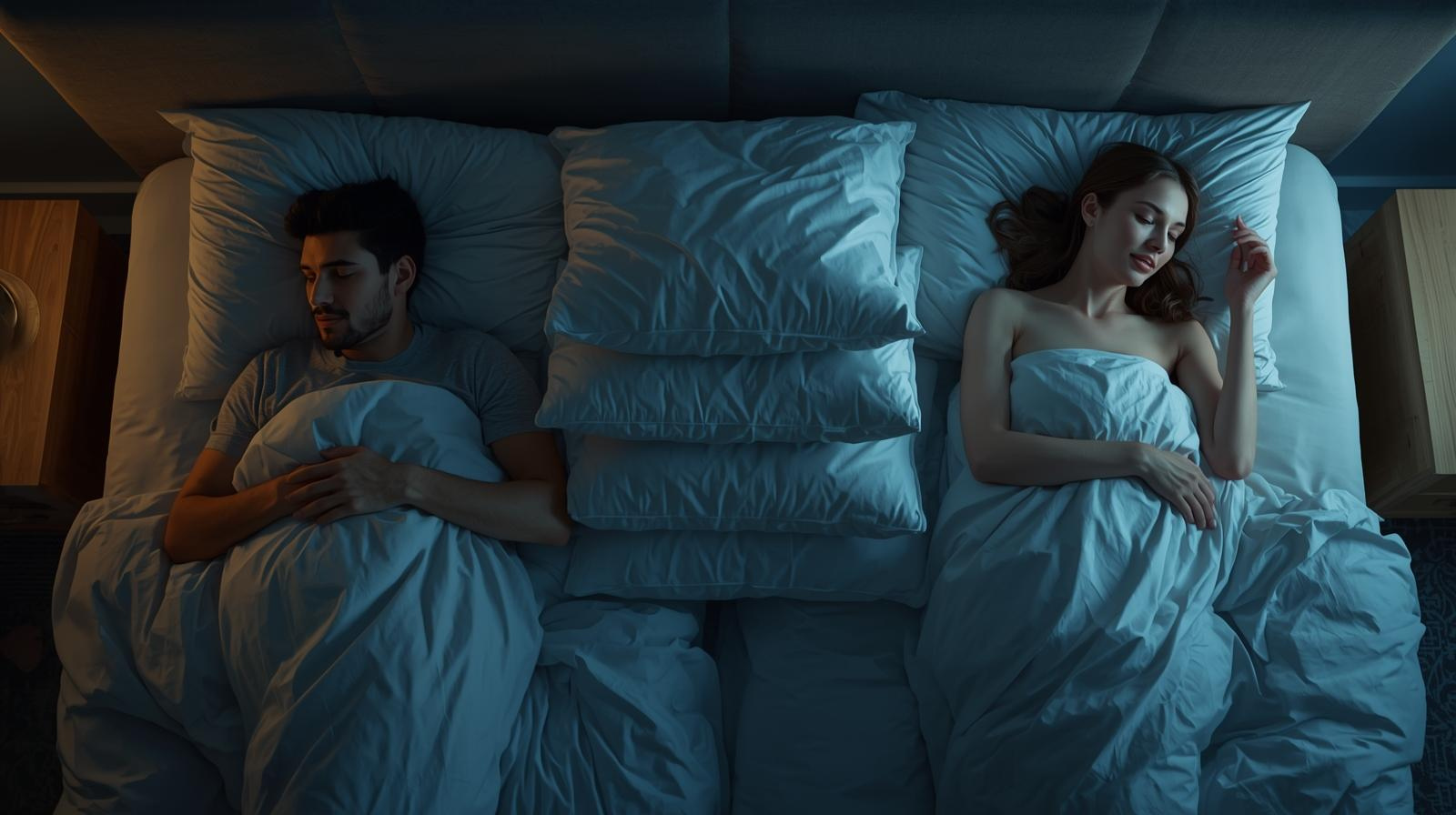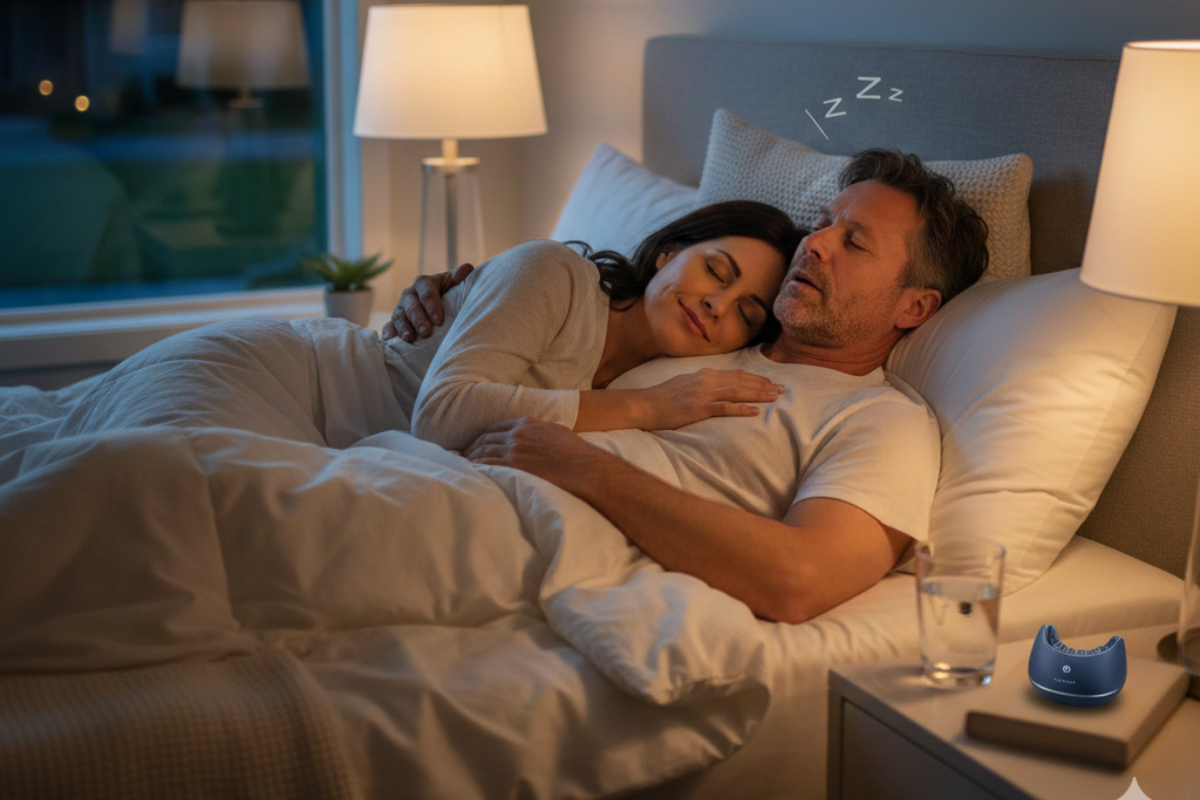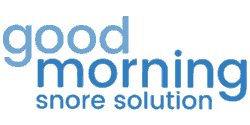Free Shipping - On Orders Over $99 (USA, Canada, UK, & AU)

Do Tongue-Stabilizing Devices Work for Sleep Apnea?
December 18, 2022 3 min read
Obstructive sleep apnea can lead to serious health problems if left untreated. The American Academy of Sleep Medicine (AASM) says sufferers should use continuous positive airway pressure (CPAP) therapy as a first-line and long-term treatment. However, studies show that up to 36% of those affected have trouble following through with treatment. That’s because CPAPs can be loud, claustrophobic, and generally uncomfortable for many.
For that reason, the AASM also recommends that physicians offer alternatives like oral appliance therapy. One type of oral appliance is a tongue-stabilizing device, which is normally recommended to treat snoring. If you are looking for alternatives to CPAP, you may be interested in TSDs and wonder whether they actually work for sleep apnea.
What Is a Tongue-Stabilizing Device?
A tongue-stabilizing device (TSD) is a mouthpiece that looks somewhat like a large pacifier and is made from medical-grade plastic. It is meant to hold the tongue forward using gentle suction, which helps keep the upper airways open to prevent snoring and disordered breathing.
The first TSD was a customizable device that was invented in the early 1980s. A non-customized version was soon introduced in the 1990s, and many different versions have been emerging over the years.
Most TSDs are designed to treat simple snoring, which is caused by partial collapse of the upper airway and does not lead to inadequate breathing. However, there has been growing interest in these devices as an option for sleep apnea sufferers as well.
Can I Use a Tongue-Stabilizing Device for My Sleep Apnea?
You can, but your physician may not be the one to recommend it. The clinical practice guidelines of the AASM currently recommend the mandibular advancement device (MAD) as an alternative for mild to moderate OSA.
MAD is an oral appliance that keeps the airways open by protruding the lower jaw forward. Its disadvantages are that it needs to be customized and patients need to have healthy teeth to use it. Those who cannot or do not want to use MAD may turn to TSDs as an alternative.
Over the past years, there has been a lot of ongoing research looking into the efficiency of TSDs in treating sleep apnea symptoms. A 2017 systematic review and meta-analysis looked at 16 of these studies involving a total of 242 patients. It found that TSDs reduce sleep apnea severity by 53% and the oxygen desaturation index by 56%. On top of that, the participants said they felt less sleepy with these devices.
However, TSDs are most likely to work for mild or moderate cases of apnea. Severe cases are unlikely to benefit and may want to look into conservative measures or surgery as alternatives.
Takeaway Message
So, can you use a tongue-stabilizing device for your sleep apnea? You could give it a try and see if it works. Studies show that it has helped some cases of mild to moderate sleep apnea. However, it is a good idea to first speak to your doctor. You need to get the most effective treatment for sleep apnea, and you want your doctor to help you find what is truly effective.
The Good Morning Snore Solution mouthpiece is the number one tongue-stabilizing device on the market. It was developed by a dentist and sleep researcher and tested for safety and efficiency in a randomized, controlled, crossover study. Plus, it has rave reviews and high user satisfaction.
References:
Ramar K, Dort LC, Katz SG, et al. Clinical Practice Guideline for the Treatment of Obstructive Sleep Apnea and Snoring with Oral Appliance Therapy: An Update for 2015. J Clin Sleep Med. 2015;11(7):773-827. Published 2015 Jul 15. doi:10.5664/jcsm.4858
Rotenberg BW, Murariu D, Pang KP. Trends in CPAP adherence over twenty years of data collection: a flattened curve. J Otolaryngol Head Neck Surg. 2016;45(1):43. Published 2016 Aug 19. doi:10.1186/s40463-016-0156-0
Alshhrani WM, Hamoda MM, Okuno K, et al. The efficacy of a titrated tongue-stabilizing device on obstructive sleep apnea: a quasi-experimental study. J Clin Sleep Med. 2021;17(8):1607-1618. doi:10.5664/jcsm.9260
Ramar K, Dort LC, Katz SG, et al. Clinical Practice Guideline for the Treatment of Obstructive Sleep Apnea and Snoring with Oral Appliance Therapy: An Update for 2015. J Clin Sleep Med. 2015;11(7):773-827. Published 2015 Jul 15. doi:10.5664/jcsm.4858
Chang ET, Fernandez-Salvador C, Giambo J, et al. Tongue retaining devices for obstructive sleep apnea: A systematic review and meta-analysis. Am J Otolaryngol. 2017;38(3):272-278. doi:10.1016/j.amjoto.2017.01.006
Also in Blog

Healthy Sleep Goals For 2026
December 22, 2025 6 min read

💨 Are Your Nighttime Breathing Issues Robbing You of Your Health and Your Energy?
December 12, 2025 3 min read
Breathing issues during sleep, collectively known as sleep-disordered breathing, are a major public health concern.

Is Your Snoring a Sign of Something More Serious? Unpacking the Science of Sleep
December 05, 2025 3 min read
When you snore, what's actually happening?
Join our Insiders Club
Every week you will receive specials, discounts, and giveaways.
Categories
- Better Sleep
- depression
- Fitness
- funny animal
- Global Citizenship
- health
- Mental Health
- mouthpiece
- nutrition
- pillow
- Productivity
- relationships
- sleep
- sleep apnea
- sleep deprivation
- Sleep Tech
- snoring
- snoring humor
- snoring jokes
- snoring sounds
- stop snoring
- StopSnoringStartLiving
- technology
- Tongue displacement
- travel
- video
- Young Adult

